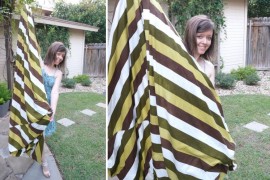Diving into the world of bed sheets isn’t just about upgrading your bedroom’s style—it’s about embarking on a quest for the ultimate sleep experience! Imagine wrapping yourself in a cocoon of comfort so divine it feels like being hugged by clouds.
That’s right, selecting the perfect bed sheets is more than a mere household chore; it’s a ticket to dreamland, where every night is a blissful journey to the land of nod. So, buckle up and get ready to transform your slumber with some fabulous fabric choices that promise to whisk you away to a realm of unparalleled comfort and joy!
A Dive into Materials for the Best Bed Sheets
When embarking on the quest for the best bed sheets for a good night’s sleep, understanding the myriad of fabric types available is essential. Each material offers a unique set of benefits that cater to different preferences and needs.
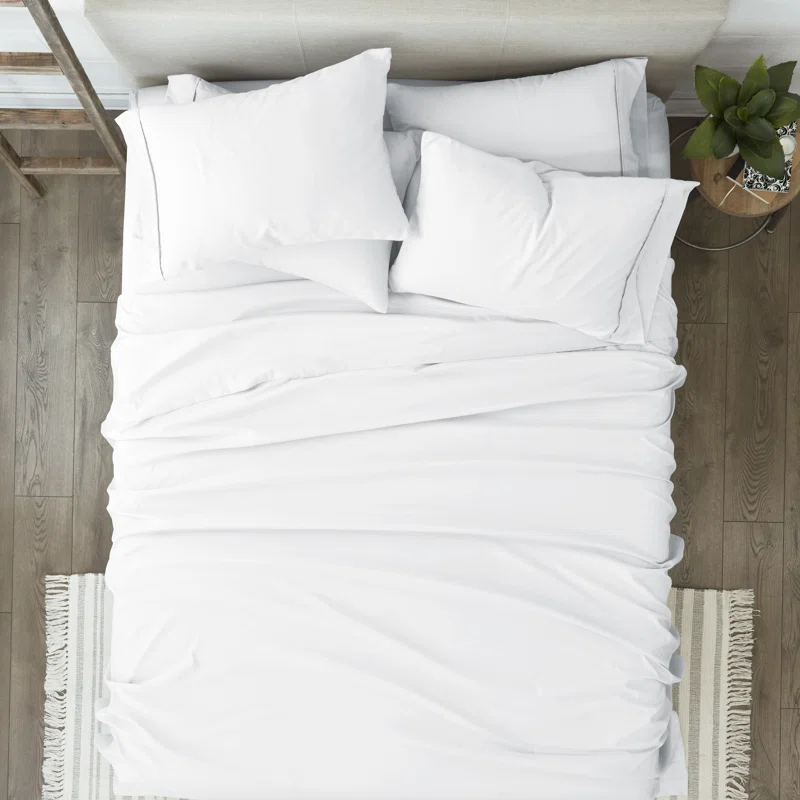
Cotton, for instance, is renowned for its breathability and softness, making it a popular choice for those seeking comfort and durability. On the other hand, silk sheets, with their luxurious feel, can elevate your sleeping experience by providing an unparalleled smoothness that is gentle on the skin. For individuals who prioritize sustainability, bamboo sheets emerge as an eco-friendly option, and they are also known for being one of the best cooling bed sheets.
Weave and Thread Count
It’s crucial to consider the specific weave and thread count, which significantly influence the texture and longevity of the sheets. Percale and sateen weaves, for example, offer distinct tactile experiences; percale is crisp and cool, ideal for warm sleepers looking for the best cooling bed sheets, while sateen boasts a silky smooth finish for those who prefer a warmer, more enveloping feel.
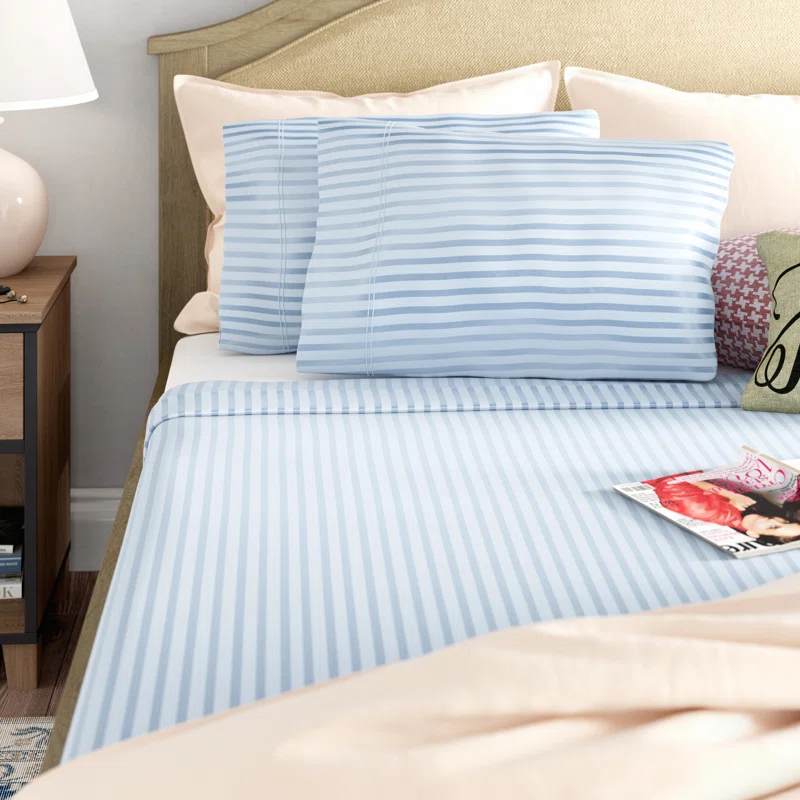
By meticulously analyzing these aspects, you can make an informed decision that aligns with your personal preferences, ensuring that your investment leads to many nights of restful sleep. Remember, the key to unlocking the door to dreamland lies in choosing the right materials that resonate with your comfort needs.
Thread Count Myths and Facts
When it comes to ensuring a restful night, the quest for the best bed sheets for a good night’s sleep often leads us down the path of thread count myths and facts. It’s a common belief that a higher thread count equals a more luxurious feel, but this isn’t always the case. What truly matters is the quality of the fabric.
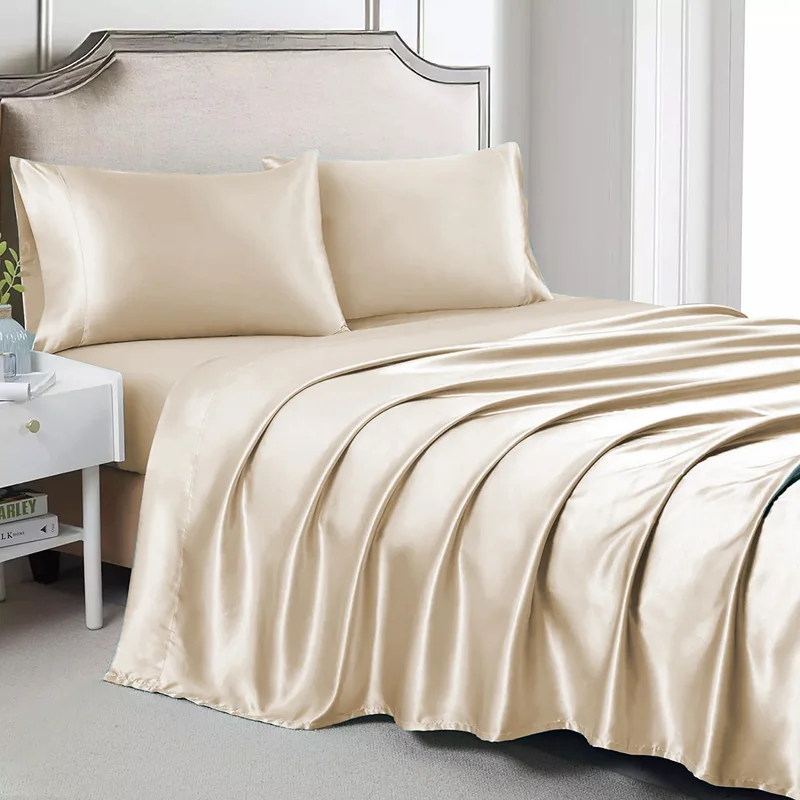
High-thread count sheets can indeed offer a smoother and more durable option, but only if they’re made from high-quality materials. Thread counts over 600 are often a result of multi-ply yarns, which can actually make the sheets less breathable and, ironically, less comfortable during a warm night.
The weave of the fabric plays a crucial role in the comfort of your bedding. For example, percale and sateen weaves offer different sensations; percale is crisp and cool, making it ideal for those who heat up at night, while sateen provides a softer and warmer feel. Ultimately, finding the best bed sheets for a good night’s sleep is about personal preference and understanding what truly contributes to comfort.
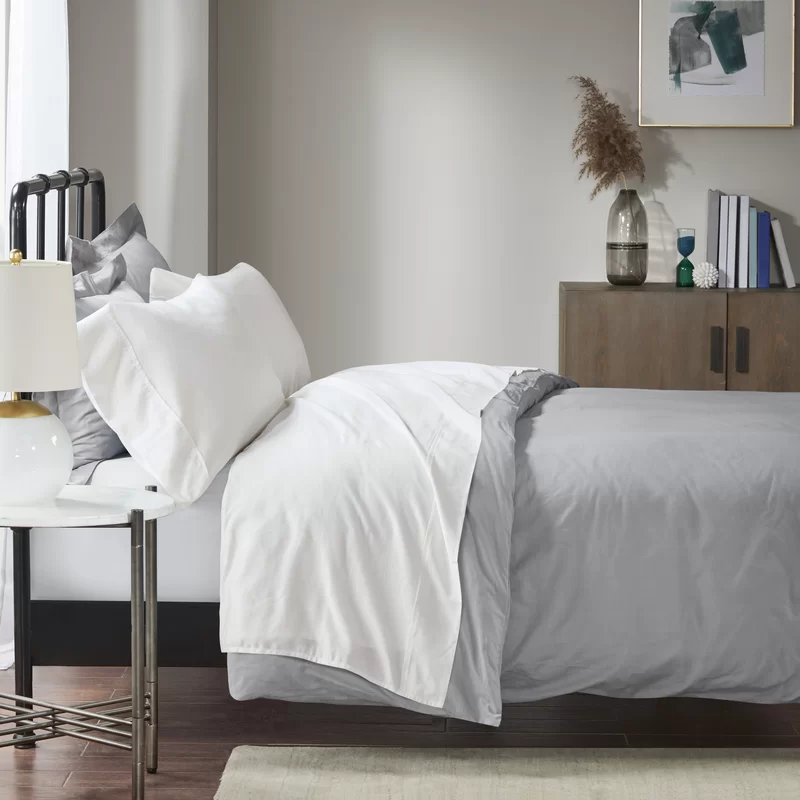
It’s about looking beyond the numbers and focusing on the feel and quality of the fabric against your skin. After all, the goal is to create a sleep sanctuary that invites relaxation and rejuvenation night after night.
Health and Comfort Considerations
Selecting the right bed sheets isn’t just a matter of aesthetics; it plays a pivotal role in ensuring a rejuvenating night’s sleep. When you invest in the best bed sheets for a good night’s sleep, you’re not just choosing fabric and color, but you’re also making a decision that impacts your physical and mental well-being.
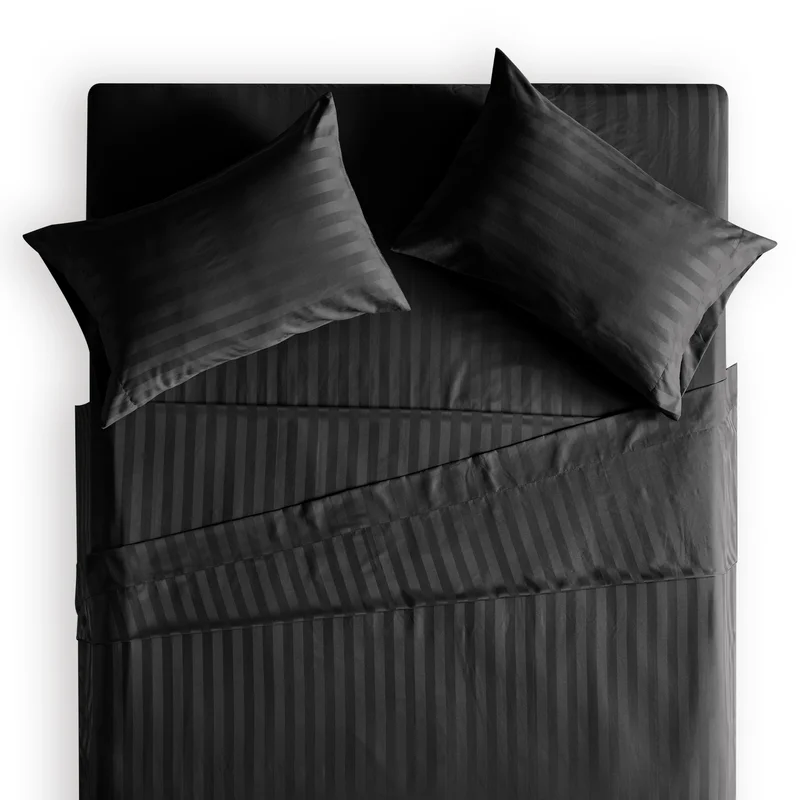
High-quality sheets can significantly enhance sleep quality by providing the right temperature control for your body. This means they help keep you warm in colder months and cool during warmer seasons, preventing night sweats and discomfort. Additionally, the texture of the sheets against your skin can either soothe you into a deeper sleep or, if chosen poorly, irritate and disrupt your rest.
The health benefits of choosing the right bed sheets extend beyond just the physical. A good night’s sleep supported by comfortable, breathable sheets can reduce stress and anxiety, leading to better overall health.
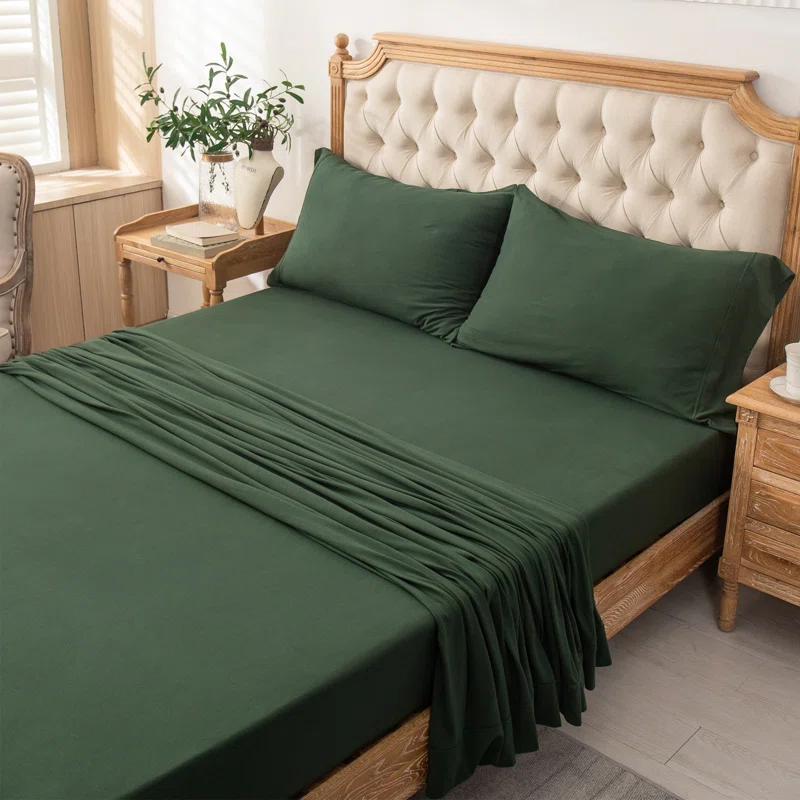
It’s about creating an environment that promotes relaxation and comfort, allowing your body and mind to rest fully. This is particularly important for those who might suffer from allergies or skin sensitivities, as hypoallergenic materials and natural fibers like cotton or bamboo can prevent irritation and enhance sleep quality.
Investing in the best bed sheets for a good night’s sleep is an investment in your health and happiness, ensuring you wake up refreshed and ready to tackle the day.
Microfiber vs. Cotton
When it comes to ensuring a restful night’s sleep, the debate between microfiber and cotton sheets is a common one among shoppers. Both materials offer unique benefits that cater to different preferences and needs.
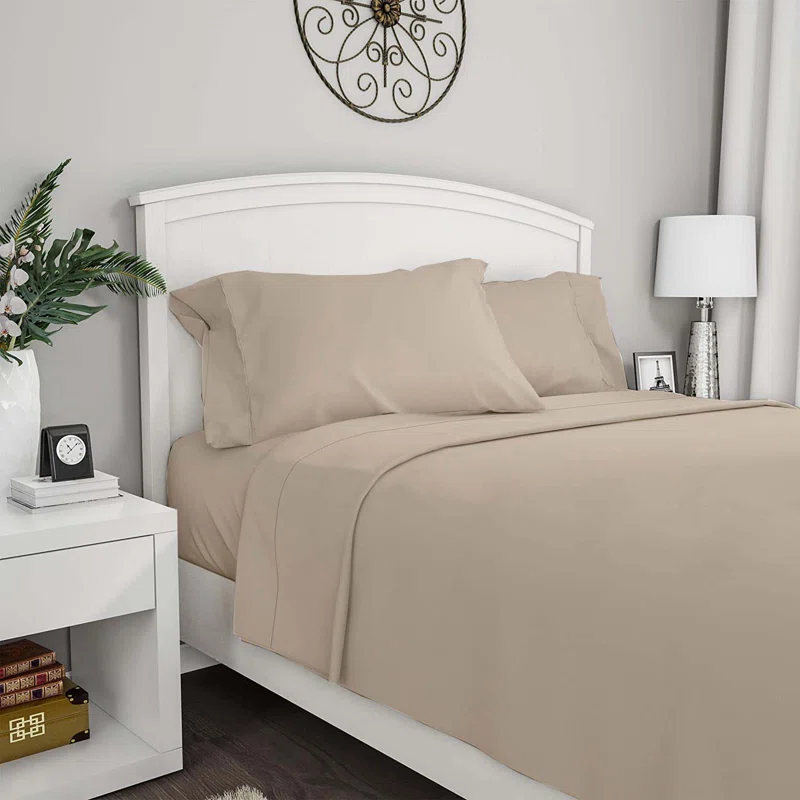
Microfiber, crafted from finely woven synthetic fibers, is celebrated for its exceptional softness and durability. It’s a fantastic option for those who value ease of care, as these sheets resist wrinkles and dry quickly. On the other hand, cotton, a natural fiber, is renowned for its breathability and moisture-wicking properties, making it an ideal choice for sleepers who tend to overheat at night.
Deciding between microfiber and cotton sheets involves considering factors like climate, skin sensitivity, and personal comfort preferences. For individuals living in warmer climates, cotton’s breathability offers a cooling effect that can enhance sleep quality. Conversely, microfiber’s snug, cozy feel may be preferable in cooler environments.
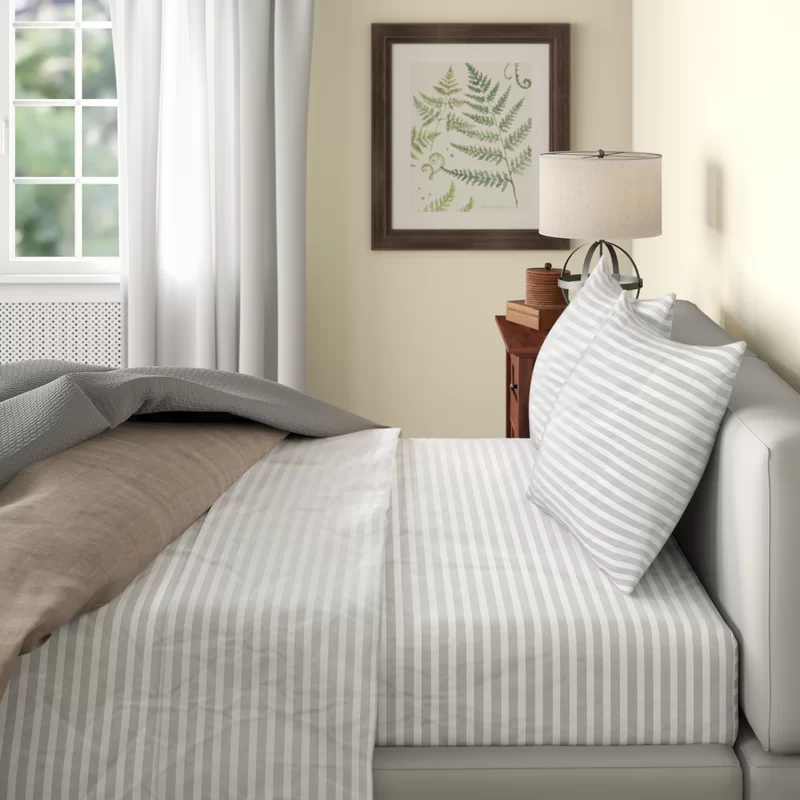
For those with sensitive skin, cotton’s natural hypoallergenic qualities can be a deciding factor. The best cooling bed sheets for a good night’s sleep depend on aligning the material’s characteristics with one’s specific sleep requirements, ensuring a personalized sleep experience that promotes rest and rejuvenation.
Care and Maintenance Tips
Ensuring the longevity of your best bed sheets for a good night’s sleep starts with understanding the care and maintenance they require. It’s not just about keeping them clean but also about preserving their texture and color so they remain as inviting as the day you bought them.
Always check the care label for specific instructions, as different materials may have different needs. For example, while cotton sheets can generally handle warm water, delicate fabrics like silk might require a gentler approach.
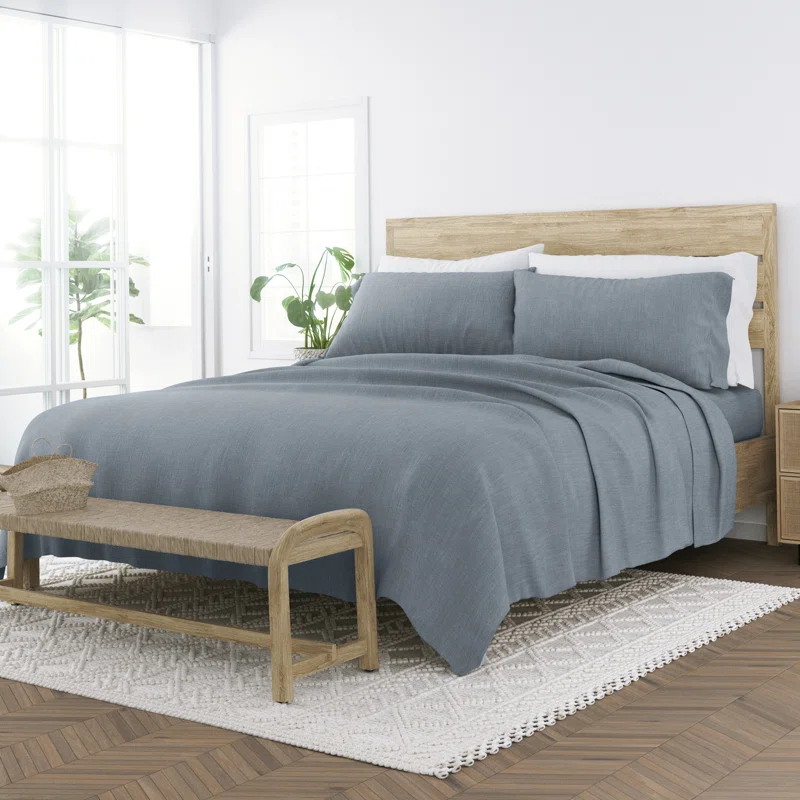
A common tip is to avoid harsh detergents and fabric softeners, as these can break down the fibers over time. Instead, opt for a mild detergent and consider adding a cup of white vinegar to the wash every now and then to help remove detergent buildup and maintain the sheets’ softness.
Another key aspect of caring for your sheets involves the drying process. Whenever possible, line drying your sheets can help extend their life by preventing the wear and tear that can occur in a dryer. However, be careful when dealing with delicate options such as any of the best cooling bed sheets since they tend to require a careful cleaning process otherwise, you might risk damaging them prematurely.

However, if you must use a dryer, choose a low heat setting and remove the sheets while they’re still slightly damp to avoid over-drying, which can lead to shrinkage and weakening of the fibers. Ironing is generally not necessary, but if you prefer your sheets crisp, iron them on a low setting while they’re still slightly damp.
Related Articles
- Styling a Bedroom With a Floating Bed Frame
- Romantic Master Bedroom Decor & Inspiration Ideas
- Traditional Japanese-Style Bedroom Designs & Ideas for Minimalists
Frequently Asked Questions (FAQs)
What material is best for bedsheets to ensure a good night’s sleep?
Cotton, particularly Egyptian or Pima cotton, is highly recommended for its breathability and softness, which can enhance sleep quality. Linen, although more textured, is another great choice for its durability and excellent heat regulation. For those with sensitive skin or allergies, bamboo sheets are hypoallergenic and soft.
How does thread count affect the quality of bedsheets?
Thread count refers to the number of threads woven into one square inch of fabric. While a higher thread count can indicate a softer and more durable sheet, it’s not the only factor to consider. A thread count between 200 and 800 is generally good for comfort and quality, but the type of cotton and weave also play significant roles in the overall feel and longevity of the sheets.
What weave is best for bedsheets?
The weave affects the texture, appearance, and breathability of bedsheets. Percale weave offers a crisp and cool feel, ideal for those who get hot when they sleep. Sateen weave provides a smoother, silkier feel and a slight sheen. The choice between the two often comes down to personal preference.
Are there any specific colors or patterns that help with sleep?
While the color or pattern of bedsheets is more a matter of personal taste, some studies suggest that calming colors like soft blues, greens, and neutrals can create a more relaxing environment conducive to sleep. However, the most important factor is choosing bedding that you find comfortable and aesthetically pleasing.
How often should bedsheets be replaced for optimal sleep quality?
Bedsheets should be washed weekly to remove dirt and oils and to maintain a fresh, clean sleep environment. As for replacement, it depends on the quality of the sheets and how well they’re cared for, but generally, sheets should be replaced every two to three years or when they start to show signs of wear like thinning, pilling, or fading.
Is it worth investing in eco-friendly or organic bedsheets?
Eco-friendly and organic bedsheets can be a good investment for those concerned about the environment or with sensitive skin, as they’re made without harmful chemicals and pesticides. They often offer comparable softness and durability to their traditional counterparts, with the added benefit of being produced in a more sustainable manner.
Which are the best cooling bed sheets?
Ready to bring new life to your home? Subscribe to our newsletter for exclusive interior design tips, trends, and ideas that will transform your space. Click here to subscribe!






